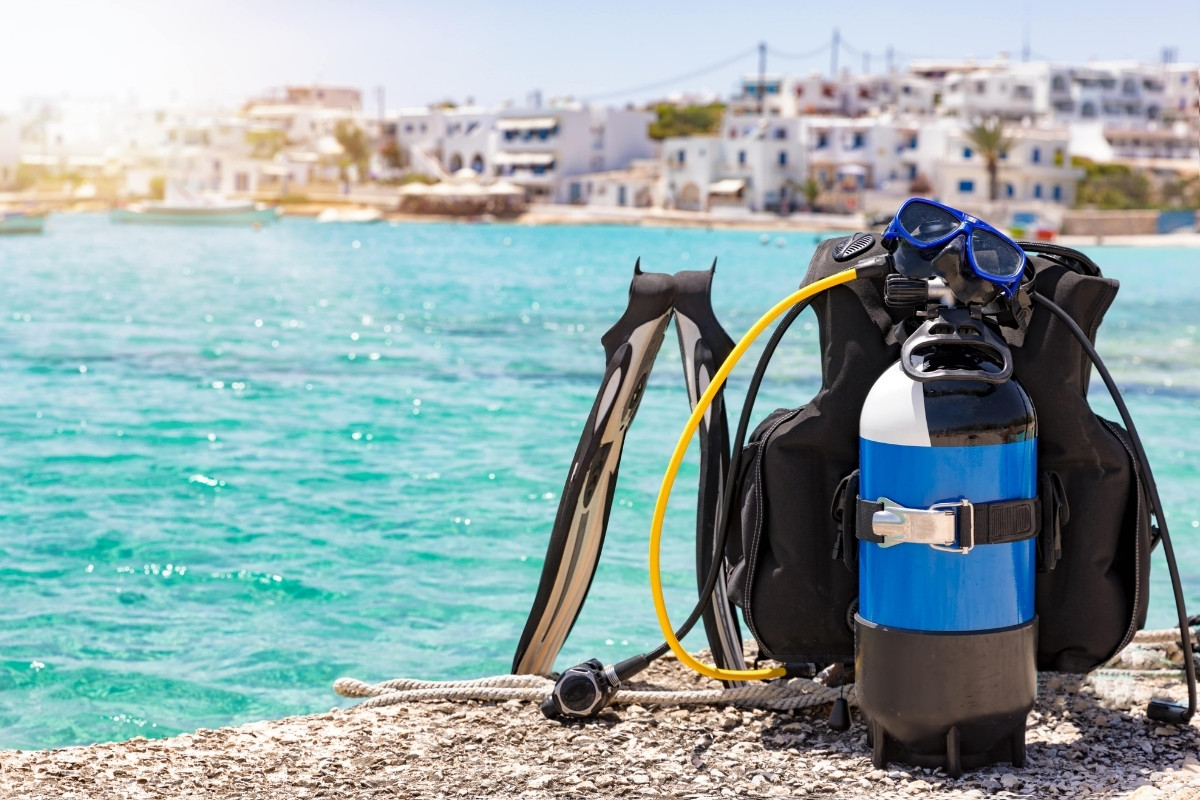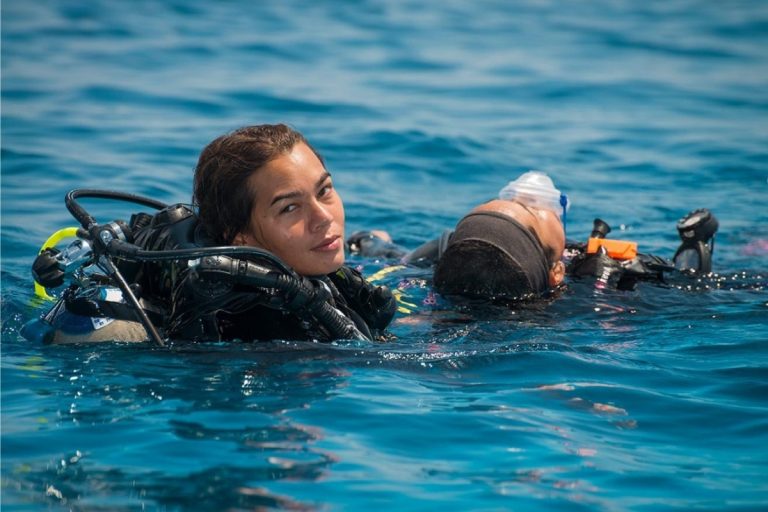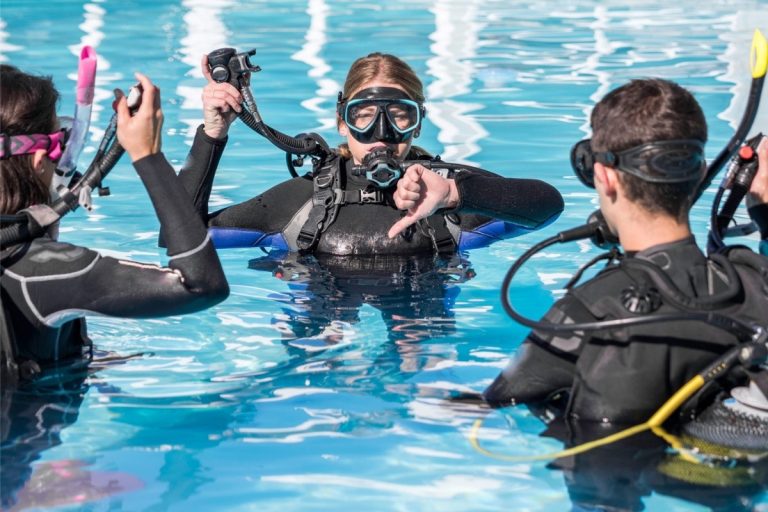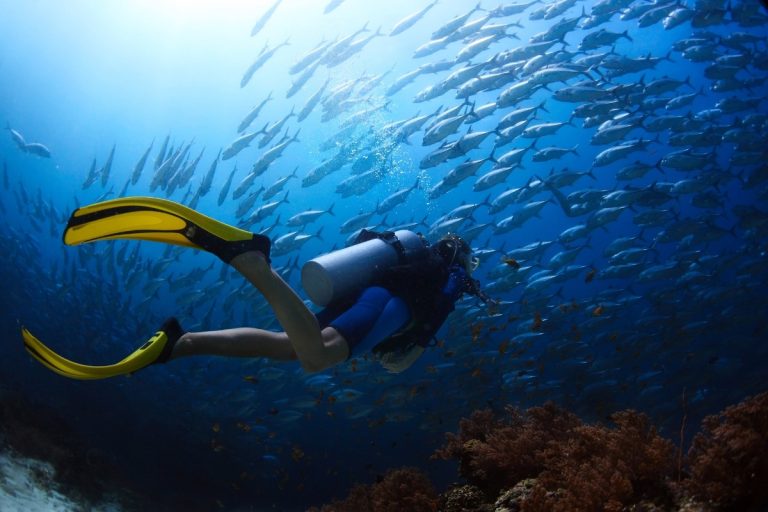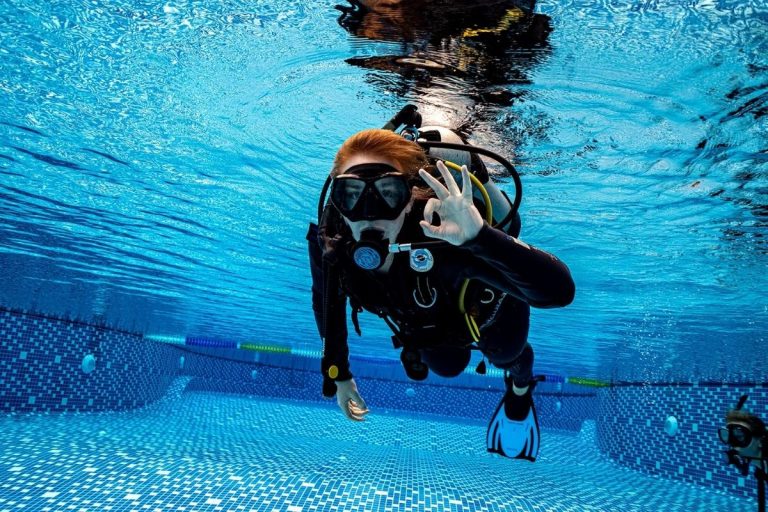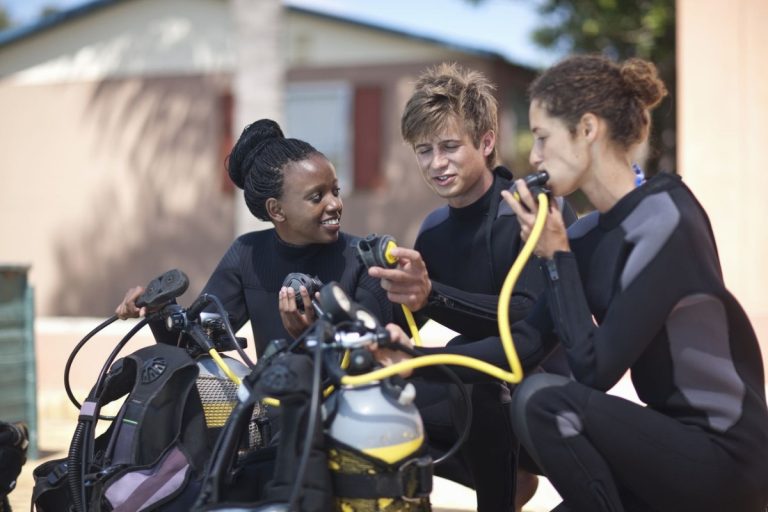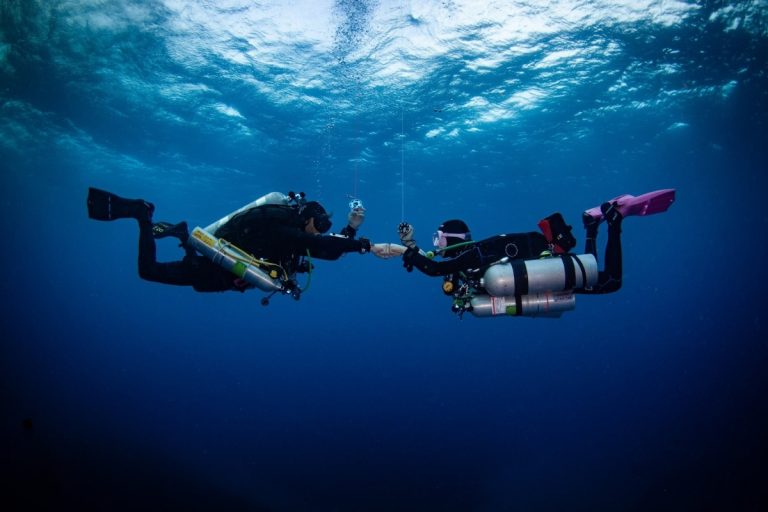Overview of PADI and SSI Certifications
When choosing your path into the underwater world, understanding the differences between SSI and PADI diving certifications becomes crucial for making an informed decision. Both organizations have shaped recreational diving for decades, yet they offer distinct approaches to training and certification that can significantly impact your learning experience.
History and Background of PADI
The Professional Association of Diving Instructors was founded in 1966 by John Cronin and Ralph Erickson in California. PADI revolutionized diving education by creating standardized training materials and establishing a systematic approach to skill development. Their mission focused on making diving accessible to recreational enthusiasts while maintaining rigorous safety standards. Over the years, PADI has grown into the world’s largest diving training organization, with a presence in over 180 countries and territories.
History and Background of SSI
Scuba Schools International emerged in 1970, founded by Bob Clark with a vision of providing flexible, personalized diving education. SSI distinguished itself by emphasizing practical skills and hands-on experience from the beginning. The organization pioneered digital learning platforms and has consistently adapted to modern educational technologies. SSI operates in more than 110 countries, focusing on creating confident, skilled divers through individualized training approaches.
Global Recognition and Acceptance
Both certifications enjoy widespread international recognition, though PADI maintains a slightly broader global presence. Most dive operators worldwide accept both credentials without hesitation. However, in some remote locations or specialized diving operations, you might encounter a preference for one over the other. The practical difference in acceptance is minimal for recreational divers, making either choice viable for worldwide diving adventures.
Regulatory Bodies and Standards
Both organizations operate under the World Recreational Scuba Training Council (WRSTC) standards, ensuring comparable safety and training requirements. They also adhere to ISO standards for recreational diving services. This regulatory framework means that regardless of which certification you choose, you’ll receive training that meets internationally recognized safety and competency standards.
Comparison of Course Structures
The structural differences between PADI and SSI courses significantly influence what to expect during your training experience. Each organization has developed distinct methodologies that cater to different learning preferences and scheduling needs.
PADI Course Structure and Progression
PADI follows a highly structured, sequential approach where students must master specific skills in a predetermined order before advancing. This systematic progression ensures thorough skill development but offers limited flexibility in pacing. The organization divides training into distinct phases: knowledge development, confined water training, and open water dives. Each phase builds upon the previous one, creating a comprehensive foundation for safe diving practices.
SSI Course Structure and Flexibility
SSI embraces a more flexible curriculum that allows instructors to adapt training to individual student needs and local conditions. Students can progress through skills at their own pace, with instructors having discretion to modify the sequence based on student comfort and ability. This personalized approach often results in more confident divers who feel comfortable with their skills before advancing to the next level.
Skill Progression Differences
While both organizations cover identical core skills, their teaching sequences differ notably. PADI requires students to demonstrate specific skills in particular environments before moving forward. SSI allows for more organic skill development, where students might practice multiple skills simultaneously or focus intensively on challenging areas. This flexibility can benefit students who learn differently or have varying comfort levels with specific skills.
E-learning Options
PADI offers comprehensive e-learning materials through their paid online platform, providing structured theoretical knowledge before practical training begins. SSI provides free access to their MySSI app and online learning platform, making theoretical preparation more accessible. Both platforms include interactive elements, videos, and progress tracking, though SSI’s free access gives it an edge for budget-conscious students.
Cost Considerations
Financial factors often play a decisive role in certification choices, with several cost elements varying between the two organizations and their affiliated training centers.
Overall Cost of PADI Certifications
PADI certifications typically carry higher price points due to their extensive marketing, standardized materials, and global infrastructure. Training materials, including manuals and e-learning access, usually require separate purchases. However, the investment often translates to widely recognized credentials and consistent training quality worldwide. Entry-level Open Water certification through PADI generally ranges from moderate to high pricing, depending on location and dive center.
Overall Cost of SSI Certifications
SSI often presents more budget-friendly options, particularly with their free e-learning platform and digital materials. Many SSI dive centers can offer competitive pricing due to lower material costs and flexible training approaches. The organization’s emphasis on digital resources reduces physical material expenses, making certification more accessible to budget-conscious divers. However, pricing varies significantly based on local dive center policies and regional market conditions.
Affordability and Value for Money
When evaluating value, consider the total package including materials, training quality, and post-certification support. SSI’s free digital resources and flexible training often provide excellent value for money. PADI’s higher costs may be justified by their extensive global network and standardized quality assurance. The specialty courses available through both organizations offer different value propositions, with SSI often providing more affordable pathways to advanced certifications.
Additional Fees and Expenses
Both organizations may involve additional costs beyond basic certification fees. These can include equipment rental, certification card processing, insurance, and optional materials. PADI typically has more standardized fee structures, while SSI costs can vary more widely between training centers. Consider these additional expenses when budgeting for your certification, as they can significantly impact the total investment required.
Teaching Methodologies
The fundamental differences in teaching approaches between PADI and SSI can dramatically affect your learning experience and confidence development as a new diver.
PADI’s Structured Approach
PADI employs a systematic, standardized teaching methodology that ensures consistency across all training centers worldwide. Instructors follow detailed lesson plans and skill sequences, creating predictable learning experiences. This approach benefits students who prefer clear structure and measurable progress markers. The methodology emphasizes safety through repetition and systematic skill building, though some students may find the rigid structure limiting.
SSI’s Flexible Learning Environment
SSI instructors enjoy greater autonomy in adapting their teaching methods to individual student needs and local diving conditions. This flexibility allows for personalized attention and customized pacing that can accelerate learning for some students. The approach encourages instructors to be creative and responsive, potentially creating more engaging and memorable training experiences. However, this flexibility can lead to inconsistency between different training centers.
Practical Skills Emphasis in SSI
SSI places strong emphasis on hands-on, practical skill development from the earliest stages of training. Students often spend more time in water practicing skills in realistic scenarios rather than focusing heavily on theoretical knowledge. This approach builds confidence through experience and helps students develop intuitive responses to underwater situations. The methodology particularly benefits kinesthetic learners who absorb information better through physical practice.
Theoretical Training in PADI
PADI maintains a strong focus on theoretical knowledge as the foundation for safe diving practices. Students receive comprehensive education about diving physics, physiology, and safety principles before extensive practical application. This thorough theoretical grounding creates well-informed divers who understand the reasoning behind safety procedures. The approach particularly benefits analytical learners who prefer understanding concepts before applying them practically.
Safety Standards and Practices
Both organizations maintain rigorous safety standards, though their approaches to implementing and teaching these standards show notable differences that can influence your training experience.
Safety Regulations in PADI
PADI implements comprehensive safety protocols with detailed standards for instructor conduct, student-to-instructor ratios, and skill demonstration requirements. Their safety philosophy emphasizes prevention through thorough preparation and systematic skill development. Quality assurance programs ensure consistent safety implementation across training centers worldwide. The organization’s extensive documentation and reporting systems help maintain high safety standards throughout their global network.
Safety Regulations in SSI
SSI maintains equally strict safety standards while allowing more flexibility in implementation methods. Their approach focuses on developing safety awareness and decision-making skills rather than rigid adherence to specific procedures. Instructors receive training in risk assessment and adaptive safety management, enabling them to respond appropriately to varying conditions. This approach can create more confident divers who understand safety principles rather than just following rules.
Emergency Protocols
Both organizations provide comprehensive emergency response training, though their emphasis differs slightly. PADI focuses on standardized emergency procedures that work consistently across diverse environments. SSI emphasizes adaptive emergency response that considers local conditions and available resources. Both approaches effectively prepare divers for emergency situations, with the choice often depending on personal learning preferences and local diving conditions.
Instructor Training and Standards
Instructor certification requirements are similarly rigorous for both organizations, ensuring qualified professionals lead your training. PADI instructors undergo standardized training with specific performance criteria and ongoing quality assurance. SSI instructors receive training that emphasizes adaptability and personalized instruction techniques. Both systems produce competent instructors, though their teaching styles may reflect their organization’s philosophical differences.
Personal Preferences and Local Availability
Your individual learning style, local diving community, and available training options often prove more important than theoretical differences between certification agencies.
Choosing Between PADI and SSI
Consider your learning preferences when making this decision. If you thrive with structured, sequential learning and appreciate consistent experiences, PADI might suit you better. If you prefer personalized attention, flexible pacing, and hands-on learning, SSI could be ideal. Think about your long-term diving goals and whether you plan to pursue advanced certifications or professional training, as this might influence your choice.
Local Dive Shop Preferences
Your local dive shop’s affiliation and expertise often matter more than the certification agency itself. A passionate, experienced instructor can provide excellent training regardless of their certification agency. Research local dive centers, read reviews, and speak with recent students to gauge training quality. Consider the shop’s ongoing support, equipment services, and diving community when making your decision.
Instructor Availability and Certification Transition
Quality instruction trumps certification agency in most cases. If you find an exceptional instructor who teaches through one agency, that might be your best choice regardless of other factors. Remember that transitioning between agencies later is possible, though it may involve additional training and costs. Focus on finding quality instruction that fits your schedule and learning style rather than getting caught up in agency comparisons.
Diving Experience and Skill Development
The long-term impact of your certification choice extends beyond initial training, influencing your development as a diver and your confidence in various underwater situations.
Hands-on Experience in SSI
SSI’s emphasis on practical skills often produces divers who feel more comfortable and confident in the water sooner. The flexible training approach allows students to spend more time practicing challenging skills until they achieve mastery. This hands-on methodology can accelerate skill development and create more adaptable divers who can handle unexpected situations. Students often report feeling more prepared for real-world diving scenarios after SSI training.
Professionalism Focus in PADI
PADI’s structured approach creates divers with strong foundational knowledge and systematic skill development. The emphasis on professionalism and standardized procedures produces divers who understand proper diving protocols and safety culture. This thorough grounding can be particularly valuable for divers planning to pursue rescue diver and divemaster training or other advanced certifications. The systematic approach ensures no critical skills or knowledge areas are overlooked.
Skill Development and Adventure Dives
Both organizations offer pathways for continued skill development through specialty courses and advanced training. SSI’s flexible approach often makes specialty training more accessible and affordable. PADI’s extensive course catalog provides numerous specialization options with standardized quality assurance. Consider your interests in underwater photography, wreck diving, or technical diving when evaluating long-term training pathways. The availability of local specialty training might influence your initial certification choice.
Frequently Asked Questions
What are the main differences between PADI and SSI certifications?
PADI offers a structured, sequential approach to training, while SSI provides more flexibility and personalized instruction.
Which certification is more widely recognized globally?
PADI has a slightly broader global presence, but both certifications are widely accepted by dive operators.
How do the costs of PADI and SSI certifications compare?
PADI certifications are generally more expensive due to extensive marketing and standardized materials, while SSI often presents more budget-friendly options.
What is the teaching methodology difference between PADI and SSI?
PADI uses a systematic, standardized teaching approach, whereas SSI allows for more flexibility and adaptation to individual student needs.
Can I transition between PADI and SSI certifications later?
Yes, transitioning between agencies is possible but may involve additional training and costs.
Navigating Your Diving Certification Journey
Choosing between PADI and SSI certifications ultimately hinges on personal preferences, learning styles, and local availability. Evaluating your long-term goals and the quality of instruction in your area can guide you toward the best decision for your diving journey.
